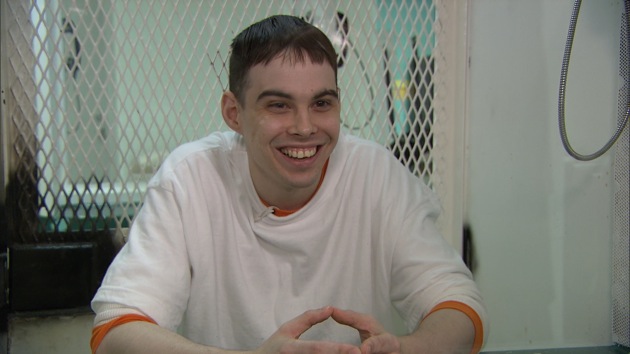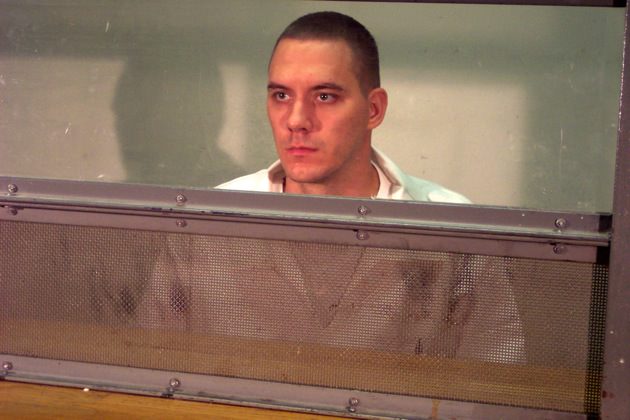A documentary film is often part stunt, part lab experiment, and the way a documentary filmmaker pursues his or her story will always involve a bit of amateur sleuthing, as well as improv. That such scriptless adventures have attracted a great director like Werner Herzog is curious but not alarming. Good documentary films can be made cheaply and we seem to be living in an abundantly golden—or at least copper (penny-wise)—era of them. Herzogʼs latest film, Into the Abyss, much like his 2005 documentary, Grizzly Man, uses the camera as a geiger counter to locate some of the more toxic elements of the American cultural psyche as seen through the questing mind of a pseudo-squeamish European. Here the setting is small town Texas’s well-traveled road to death row. Once again, in his soft, Teutonic off-camera voice, Herzog insinuatingly and gently coaxes his interviewees while his camera registers a more ambiguous, startled fixation on people and places, plus a willingness to stare bluntly. Director and camera are like good cop, bad cop.
While given the banal subtitle “A Tale of Death, A Tale of Life,” Into the Abyss doesnʼt have its hands on entire tales as much as the shiny pieces of many. The project seems to have initially aimed to tell the story of Mike Perry, a Texan inmate who had been on death row for ten years, since the age of eighteen, and who, when Herzog meets him, is scheduled for execution in eight days. Although the boyish, bucktoothed Perry eagerly speaks to Herzog and breaks everyoneʼs heart (almost all who are interviewed speak movingly and with great ostensible openness; how confessional reality television has prepped their personalities one can only guess), Perryʼs family refused to appear in the film—a very large hole. So Herzog is forced to roam around the whole Texas scene of small town dysfunction and capital punishment protocol.
The actual crime—the shooting by Perry and his friend Jason Burkett of three people in order to steal a red Camaro in a gated community—is so senseless and stupidly conceived it is really just a worst-case portrait of teenage boy drunkenness, impulsivity, poverty-addled sociopathy, and a country so awash in weapons that it has arrived (perhaps once more) to a point in history where every high schooler knows how and where to get a gun. (This aspect is missing from Herzogʼs social critique, which focuses on capital punishment.) The coveted red Camaro, a kind of CSI MacGuffin, now sits in a police crime lot with a tree growing through its floor.
The first person interviewed is not Perry but the Death House reverend, who will speak to Perry of God (everyone in this picture, except Herzog, speaks of God) and who, as a gesture of kindness, will hold Perryʼs ankle during the execution on the gurney. The reverend is against the death penalty, but in thinking about it before the camera he veers off into an anecdote about a golf trip and his relief at not hitting a squirrel and killing one of God’s creatures, and we can see how, when pressed to illuminate its own contradictions, the human mind can go on the fritz. This may really be Herzogʼs theme. His later interview of Fred Allan, the former captain of the Huntsville staff that straps the prisoners to the gurney, is a stirring example of someone who cracks under the pressure of paying work that involves killing up to two people a week. After the execution of Karla Faye Tucker, to whom Allan had begun to feel close, he has something of a breakdown and eventually quits his job, foreswearing capital punishment as well as his pension. Although he has nothing to do with Mike Perryʼs story, he is an important part of Herzogʼs film.
Perhaps the most moving soliloquy belongs to Delbert Burkett, the jailed father of Mike Perryʼs partner in crime, Jason Burkett. Jason—who appears in the film looking simultaneously soldierly and apprehensive—is given life imprisonment, rather than the death penalty, thanks to his fatherʼs testimony during the sentencing hearing, which so moved and mercifully softened the jury that he reiterates his eloquently self-blaming remarks for Herzog. Although his son Jason was living in a trailer park at the time of the murders, Delbert at that same age had won a football scholarship to the University of Texas at Austin only to drop out his senior year and, demoralized, eventually become a drug addict and thief and abandon his family. He and his son, both incarcerated, recently spent a holiday dinner together, handcuffed, a low point in the fatherʼs life that he describes with a kind of naked shame. His memories of Jason as a sickly child with several neuroblastomas (a deadly cancer) that required painful bone marrow treatment are heartrending and give a further glimpse into the injury and difficulties that can beset an already wobbling family and send it off the rails.
Advertisement
Herzog is interested in American violence reflected even in the names of Texas towns—“Cut and Shoot” is one—as well as the way that death and mayhem lying literally next door are moved on from, whereas superstition—rainbows and departed spirits—is not. Crater Lake, a spot where bodies were infamously disposed of, and in the Perry-Burkett crime was also used for that purpose, is a stoneʼs throw from the gated community in Conroe that harbored the beloved Camaro. A new house near the crime scene is shown with a long winding driveway that paves over the spot in the woods where one of the bodies was found. Herzogʼs camera takes an unflinchingly quiet look.
Dedicated to the victims and their families, the film gives perfect expression to the fear of a phone ringing: one of Herzog’s bereaved interviewees has had the phone removed from her house.
In seeking the bizarre, Herzog has one thing after another just fall into his lap. Perhaps nothing seems stranger than the marriage of inmate Jason Burkett to a young Kansas woman who has taken an interest in his case and begins writing to him. She is well-groomed, and plain-spoken, filmed against the backdrop of a cozily domestic living room. Their courtship, which she recounts to Herzog, is a perversely mythic one that echoes the Wild Westʼs sending east for schoolteachers and wives. After their marriage she manages to become pregnant with Jasonʼs child—he wants fifty children, he says—and although she is at first reluctant to reveal the illegal details of this, Herzogʼs Viennese therapistʼs voice, not completely unlike Hannibal Lecter talking to Clarice, entices it out of her. She then, holding up her smartphone, shows us the ultrasound of the fetus, a ghostly image that Herzogʼs camera does not succeed in turning away from. “Scott Peterson gets a hundred letters a day,” says Melyssa Thompson-Burkett, in an attempt to distinguish herself from other women who have fallen for handsome death row inmates. Like so many other people in this riveting film, she does not on the surface appear to be crazy.




